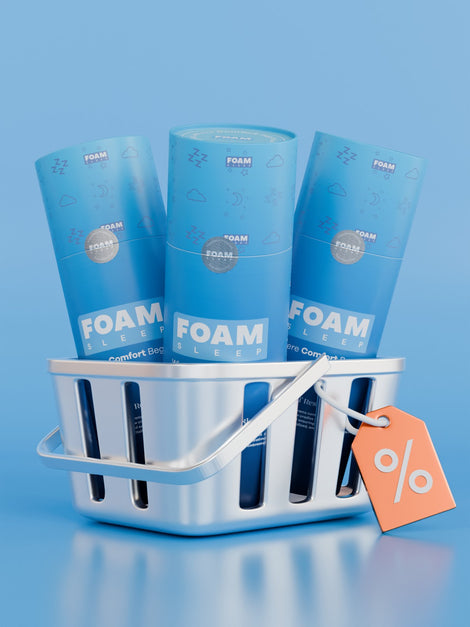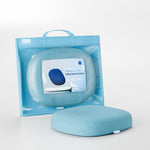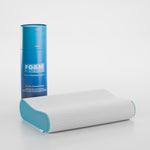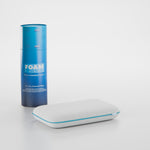End Tailbone Pain: Understanding COCCYDYNIA and FOAMSLEEP Ultra Seat Cushion

Tailbone pain, medically known as coccydynia, is a debilitating condition that significantly impacts the quality of life for many individuals. This discomfort, particularly evident during prolonged sitting periods, can create both physical and psychological challenges that interfere with daily activities and overall well-being.
What is Tailbone Pain (Coccydynia)?
Tailbone pain, medically termed coccydynia, is a condition characterized by pain and discomfort in the coccyx region. The coccyx, commonly known as the tailbone, is located at the very bottom of the spine and consists of three to five fused vertebrae that form the terminal segment of the vertebral column.
Tailbone pain can arise from various potential causes, including:
Trauma: Direct impact, falls, or injuries to the tailbone region can cause trauma that leads to persistent coccyx pain. This type of injury is particularly common in contact sports or accidents.
Pilonidal Disease: Ingrown hairs in the tailbone area can create pilonidal cysts, leading to significant pain and discomfort that may require medical intervention.
Coccyx Fracture: Fractures in the tailbone region cause severe pain and discomfort, typically resulting from traumatic incidents or repetitive stress.
Infection: Infections in the coccyx area can lead to pain and inflammation. For example, pilonidal sinus infections are frequently associated with tailbone pain and may require antibiotic treatment.
Cysts: Cysts in the tailbone region can cause pain and discomfort. When these cysts become infected, the pain intensity can increase significantly, requiring immediate medical attention.
What are the Symptoms of Coccydynia?
While coccydynia symptoms vary from person to person, the most commonly reported signs include experiencing pain when sitting or during sudden movements, difficulty rising after prolonged sitting periods, and tenderness in the tailbone area. Many patients also report increased discomfort when transitioning from sitting to standing positions.
How is Coccydynia Prevented and Treated?
Treatment for tailbone pain typically depends on the severity of symptoms and underlying causes. Mild symptoms can often be alleviated through rest, over-the-counter pain relievers, and lifestyle modifications. However, when symptoms are severe or persistent, seeking medical attention becomes crucial. Treatment options may include physical therapy, prescription medications, corticosteroid injections, and in rare cases, surgical intervention.
FOAMSLEEP and Ultra Seat Cushion: Your Solution to Tailbone Pain
This is where FOAMSLEEP's Ultra Seat Cushion becomes an invaluable solution. Anatomically designed to support the lower back and hip regions, this cushion can significantly help prevent tailbone pain. The specialized support provided during prolonged sitting periods reduces pressure on the coccyx, facilitating pain relief and improved comfort.
The Ultra Seat Cushion features advanced memory foam technology that contours to your body shape, providing personalized support that adapts to your unique anatomy. This targeted pressure relief is essential for managing coccydynia and preventing future episodes.
Who Can Benefit from the Ultra Seat Cushion?
The Ultra Seat Cushion isn't exclusively designed for individuals with tailbone pain—it's also ideal for professionals who spend extended periods at computer workstations. Proper body support while sitting can help prevent various musculoskeletal disorders and promote better posture throughout the day.
Key benefits include:
Conclusion: Reclaim Your Comfort
To alleviate tailbone pain and enhance your quality of life, consider FOAMSLEEP's Ultra Seat Cushion as your trusted solution. For healthy living and optimal comfort, the support you need is now within reach with the Ultra Seat Cushion!
Experience the difference that proper ergonomic support can make in your daily life. Visit fomsleep.com today to learn more about our complete range of orthopedic support products and take the first step toward pain-free sitting.
Disclaimer: This information does not constitute medical advice. Please consult with a healthcare professional for proper diagnosis and treatment.




